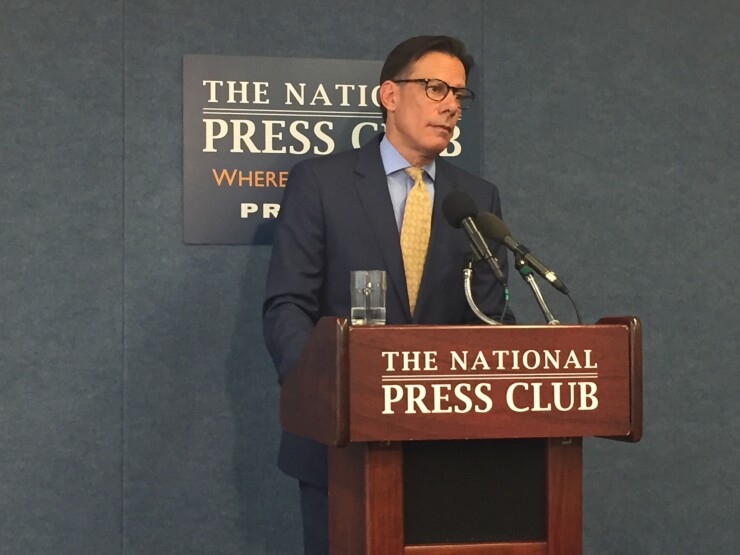WASHINGTON, D.C. – Rising healthcare costs dovetailing alongside a tight labor market —which is upping the ante for recruiting and retaining talent — are pushing employers to take charge and offer new and better ways of delivering health and wellness solutions to employees.
More than a quarter of large employers are looking to circumvent the delivery system to help improve access, conveniences and the overall experience by developing virtual and digital care point solutions alongside concierge services as the role of employers in the healthcare system continues to change, according to the National Business Group on Health’s annual survey, released Tuesday. The nonprofit surveyed 170 large employers.
Per employee costs are projected to increase 5% to $14,800 in 2019, compared to this year’s estimated $14,099 per-employee, according to NBGH’s figures. Employers generally cover about 70% of the total employer-paid premium which means employees’ share will be 30%, or nearly $4,500 next year, NBGH’s 2019 large employer healthcare strategy and plan design survey indicates.

These rising healthcare costs are pushing employers to come up with innovative approaches to provide better, and often cheaper, healthcare to workers, said Brian Marcotte, president and CEO of the National Business Group on Health, speaking Tuesday in Washington D.C.
“Healthcare cost increases continue to outpace workers’ earnings and increases in inflation, making this trend unaffordable and unsustainable over the long term,” Marcotte said. “No longer able to rely on traditional cost sharing techniques to manage costs, a growing number of employers are taking an activist role in shaking up how care is delivered and paid for.”
Nearly half of all companies polled said they are doubling down on driving delivery system changes. For example, 35% are implementing alternative payment and delivery models such as accountable care organizations and high performance networks either directly or through their health plan. More are embracing virtual care solutions, including coaching, condition management, remote monitoring, physical therapy and cognitive behavioral therapy, all which NBGH notes “shows the greatest potential for growth over the next several years.”
“The growth in virtual solutions largely reflects employer frustration with the pace of change in how healthcare is delivered,” Marcotte said. “If virtual care is not part of your healthcare strategy, your healthcare strategy is not complete.”
This year, 65% of employers will provide virtual mental/behavioral health services, 58% will offer virtual health and lifestyle coaching, and 42% will have virtual diabetes care management services in place.
Direct contracting with health systems and providers is also expanding, from 3% in 2018 to 11% in 2019, NBGH found.
In an unexpected shift from prior years, fewer employers plan to offer HDHP plans as the only option for their employees, dropping 9 percentage points from last year.
“The build-up of CDHPs has been driven primarily by the Affordable Care Act and the Cadillac tax, which was looming to go into effect in 2018,” Marcotte said. “You had a lot of companies rush to move to HDHPs to either minimize the impact of the Cadillac tax or delay it as far as they could.”
Telemedicine, employee assistance programs and nutrition counseling are among the offerings that have increased in popularity, according to a new report from Korn Ferry and WorldatWork.
And, he added, there could be other factors involved in the decrease, such as a tight labor market and employers playing in the war for talent, but as the tax continues to be kicked down the road, employers are relaxing their move from that perspective, reflecting a move on their part to add more choice back into the healthcare mix.
Meanwhile, employers are very interested in adding more flexibility into their HSA plans, Marcotte added.
Also see:
“There’s a lot of rigidity in what you can do and what you can’t do if you have a health savings account,” he said. “Building back in flexibility, employers would like to cover more value-based services and provide a higher level of coverage.”
Disruptors also are playing a major part in influencing decisions employers will make on getting employees access to healthcare, Marcotte said.
“Interestingly, seven in 10 employers believe new market entrants from outside the healthcare industry are needed to disrupt healthcare in a positive way,” he said. “These disruptors include innovators from Silicon Valley and elsewhere, and employer coalitions.”
The healthcare industry’s bombshell announcement came at the beginning of the year when
“If you begin to leverage Amazon’s footprint within the home, their relationship with the consumer and their customer obsession, if you can incorporate healthcare into [employees’] routine and leverage [Amazon’s] platform, then you have an opportunity to reach [employees] in a way nobody has been able to,” Marcotte said.







